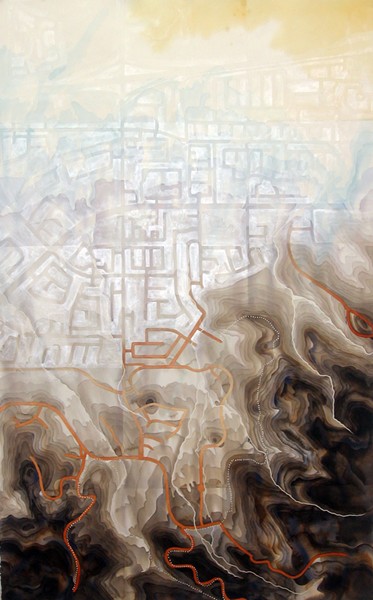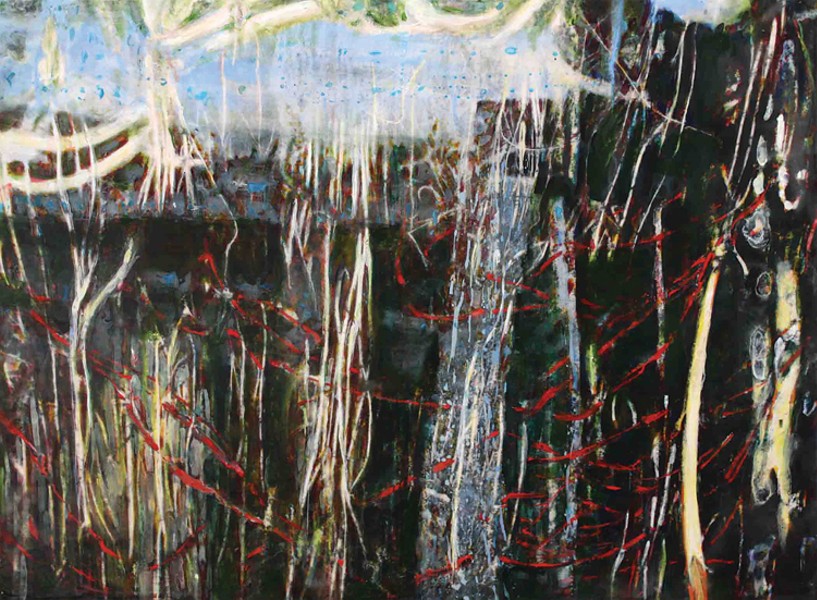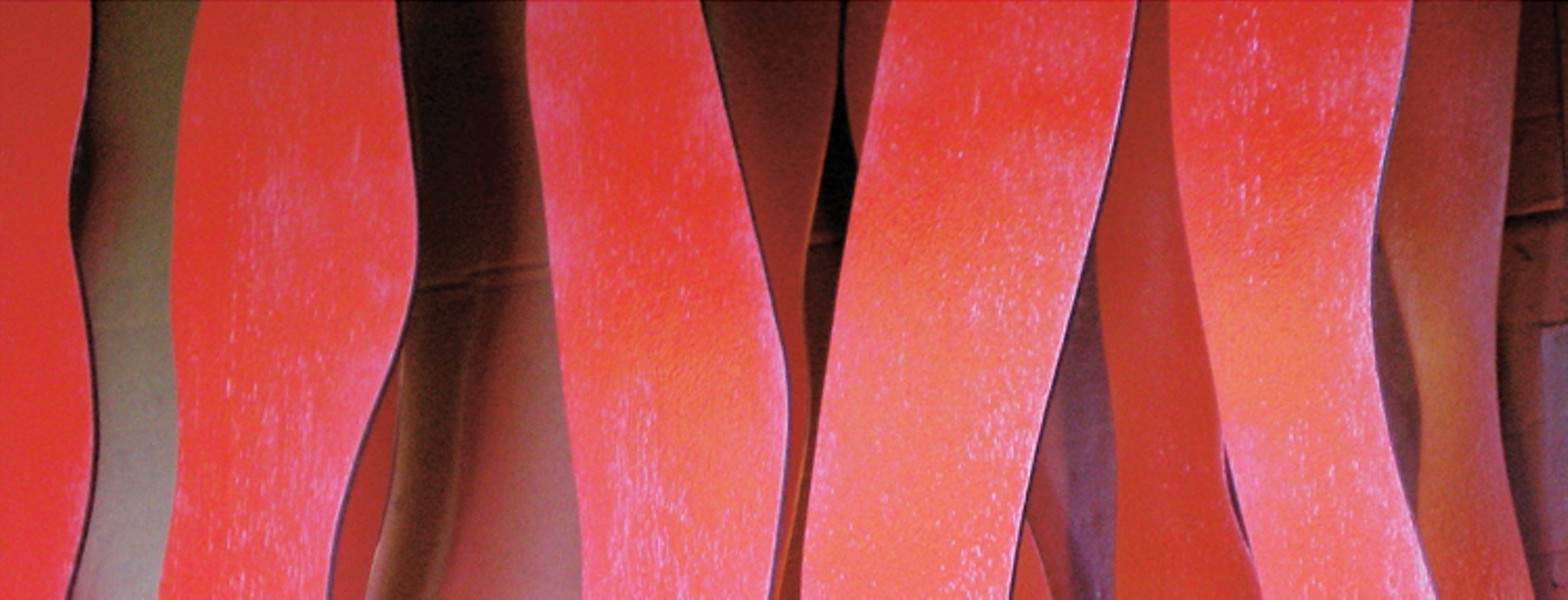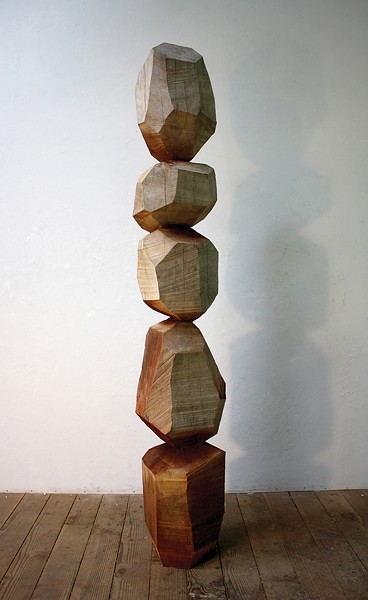This month the Piante Gallery mounts Abstraction, a show by 16 artists for whom abstract art is a signature technique. This kind of focused exhibit affords an opportunity to experience in depth the many approaches by these local artists.
As one of the artists involved, I attended a meeting back in October with the other participants and the gallery owner, Sue Natzler, to work out details of the exhibit. The lively conversation about titling the show, and about defining and categorizing art in general, was full of insights. Several of the artists have given me their thoughts on what abstraction or making abstract art means to them.
Becky Evans, whose extensive journeys into the watersheds of our area have brought us many profound images and insights into the natural world, says, "When I think of my process of art making, I do not think specifically of abstract or abstraction. I think my process could be described more as ‘translation.' My finished work is created from a long engagement or conversation with ‘place.' And that long engagement then finds its way into paint or paper, or sticks or stones, or sand."
John Hylton, who recently dazzled us with his gallery-wide installation on cosmic themes, states, "Thinking about abstract art brings up thoughts on how man first created alphabets. Beginning with natural objects and abstracting (simplifying) them to signify sounds or thoughts is a huge achievement, emblematic of how artists take their experiences and simplify them down to basic colors or shapes."
As a professor of art at HSU, Teresa Stanley has given much thought to her practice of abstract painting, and she eloquently addresses its larger validity. "Why do we find it easy to accept music without words yet find art without recognizable images so difficult? I became an abstract artist after becoming disillusioned with trying to paint complex narrative paintings. I felt trapped in the stories I was telling and weighed down by the specificity of my imagery. Finding my way as an abstract painter, I found I could finally jettison the images that muddled and confused the meaning I thought I was creating in my paintings. As with music, the improvisational method of working that my form of abstraction followed allowed me to create meaning from my process. And surprisingly, the narrative impulse remained -- only it spoke in a less specific and linear language."
Several of the artists proffered definitions for abstract or abstraction that were equally descriptive of the spirit of their work. Joan Gold, a strong champion of abstract works of expressive color and composition, notes that "one of the definitions of abstract is the verb ‘to extract' and, in that sense, it is myself that I abstract from."
Mimi La Plant, known for her paintings of exuberant color exploration and bold gestures, says, "The freedom of expression possible in the expanding language of abstract art is something delicious!"
Along with the artists already mentioned, this show will feature works by Marilyn Andrews, Bob Benson, Dona Blakely, Alastair Bolton, Lori Goodman, Leslie Price, Tina Rousselot, Emily Silver, Barbara Dolan-Wilkinson, and works from the estate of Richard Case. My thanks to all the artists who responded to my inquiry. I received many thoughtful replies that I will certainly quote from in future articles.
No matter what labels are applied to this means of expression, which we have inherited from the 20th century's sudden eruption of new ideas and technologies, it is a movement toward greater freedom and inclusiveness. There will never again be rules as to what art must be, no hierarchy of one form or style over another. There will never be a subject or an idea that is off limits to what artists can or should explore. Perhaps most importantly, art making in and of itself now is recognized as a process that leads to new responses and understandings.
The other half of this aesthetic play of art making is the viewer, the appreciator. Abstract art definitely assumes there are viewers willing to participate in confronting what they see without trying to make it into something it's not. Abstract, nonobjective or conceptual art, unlike figurative art, depends entirely on the emotional significance of color, form, texture, size and spatial relationships, rather than on representational forms.
That's not to say that it shouldn't elicit associations with ideas and things that are familiar, but let's face it: A work of art, no matter its style, is a created thing. It is framed or presented to be confronted for the pleasure and potential of experiencing an "inner resonance" of new meanings. If you're not willing to take the time to participate, to ask questions of yourself and others, to be stimulated by being momentarily puzzled, then you're not in the game.
For those willing to give it a go, this show will kick off Arts Alive! at the Piante Gallery (620 Second St.) with a festive reception for all the artists, Dec. 3 from 6 to 9 pm.




Comments